Balloon Vine (Cardiospermum halicacabum), also known as Heart Pea, Love-in-a-Puff, or Puffball, is a versatile vine from the Sapindaceae family. Native to the tropics and subtropics, including regions like Mexico, this annual plant is known for its ability to thrive in warm climates. Its life cycle is marked by rapid growth, making it a popular choice for gardeners looking for quick vertical coverage.
This vine is particularly admired for its distinctive seed capsules, which resemble small inflated balloons, giving the plant its common name. During summer, it produces small white flowers that later transform into these unique capsules. When mature, the capsules release black seeds, dispersed naturally by wind and water, enabling the plant to spread efficiently. Balloon Vine is often found in natural habitats such as riverbanks, woodland edges, and pastures, where its climbing nature helps it adapt to a variety of environments.
| Common name | Balloon Vine, Heart Pea, Heart-seed, Heart Seed Vine, Little Lanterns, Love-in-a-puff, Puffball, Smooth-leaved Heart Seed, Winter Cherry |
| Botanical name | Cardiospermum halicacabum |
| Family | Sapindaceae |
| Species | halicacabum |
| Origin | Tropics & Subtropics, Mexico |
| Life cycle | Annual |
| Plant type | Vine |
| Hardiness zone | 9, 10, 11 |
| Sunlight | Full Sun |
| Maintenance | High |
| Soil condition | Clay |
| Soil ph | Acid |
| Drainage | Moist but Well-Drained |
| Growth rate | Fast |
| Spacing | Less than 12 in. |
| Flowering period | Fall |
| Flower color | White |
| Leaf color | Green |
| Fruit color | Brown, Copper |
| Fruit type | Capsule |
| Fruit benefit | Showy |
| Leaf benefit | Showy |
I. Appearance and Characteristics
Cardiospermum halicacabum, known as the lesser balloon vine, balloon plant or love in a puff, is a climbing plant widely distributed across tropical and subtropical areas of Africa, Australia, and North America that is often found as a weed along roads and rivers.
The 1889 book The Useful Native Plants of Australia records that other common names for Cardiospermum halicacabum were “heart seed”, “heart pea”, or “winter cherry”. It is one among the “Ten Sacred Flowers of Kerala”, collectively known as dasapushpam.
The generic name Cardiospermum, which translates to “heart seeds”, was given due to its large, black seeds, the white mark of which is reminiscent of a stylized heart. The specific epithet halicacabum comes from the Greek word for salt barrel and refers to the inflated fruits, after which the common name balloon vine is derived.
Mudakathan (முடகத்தான்) in Tamil means “clears rheumatism”.
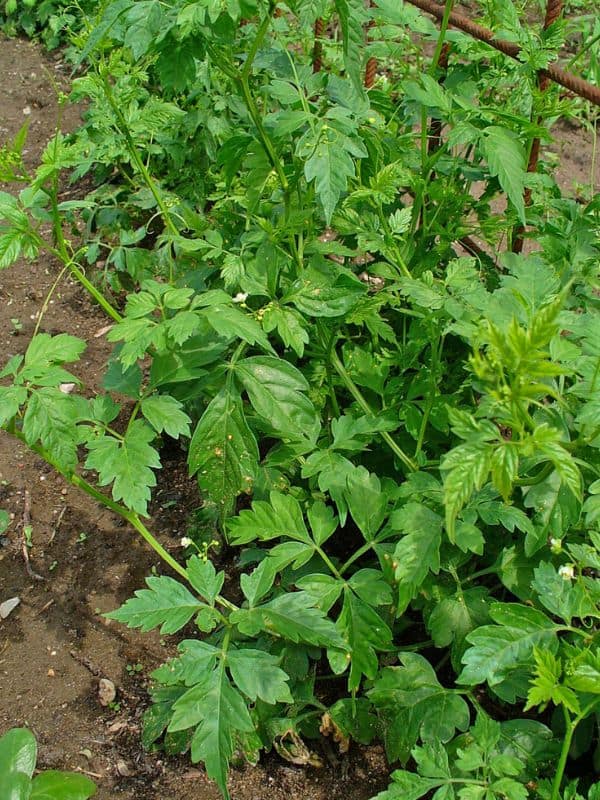
The balloon vine is a strongly overgrown, perennial herbaceous climbing plant that can even become lignified at the base. Growing over 10 meters high, it can bloom at a height of around 25 cm. The slender, grooved stems are hairy bald to sparsely downy.
The 5 to 6 cm long, triangular foliage leaves distributed on the stem are divided into a petiole and pinnate leaf blade. The petiole is (0.5 to) 1.5 to 3.5 cm long and the rachis is 0.4 to 2 cm long. The opposite leaflets are 1 to 2 cm long and the terminal leaflets are 4 to 6 cm long. The leaf margins are serrated. The stipules are reduced to tiny, early-falling scales. On the side of a 5 to 9 cm long, sparsely downy hairy inflorescence stem, there are two 1 mm long bracts, two circularly rolled tendrils and three to seven flowers in a zymous inflorescence.
Flowers and fruit
The functionally unisexual flowers are zygomorphic and fourfold double perianth. Of the four free, concave, durable sepals, the outer two are circular, 2 mm long and ciliate, while the inner two are oblong-ovate, 3 to 4 mm long and glabrous. The four white to yellowish petals are obovate and about 3 mm long, the upper two are each adorned with woolly scales and the lower two have large, leaf-shaped scales and two glands.
In the male flowers are two circles with four free stamens each and rudimentary stamps present. The compressed stamens are hairy and about 2 mm long and the anthers are about 0.5 mm long. In the female flowers are obovate, 2 to 3 mm long and hairy, insulated draft tube ovary with a short fluffy hairy stylus, which ends in a three-part scar and eight staminodes present.
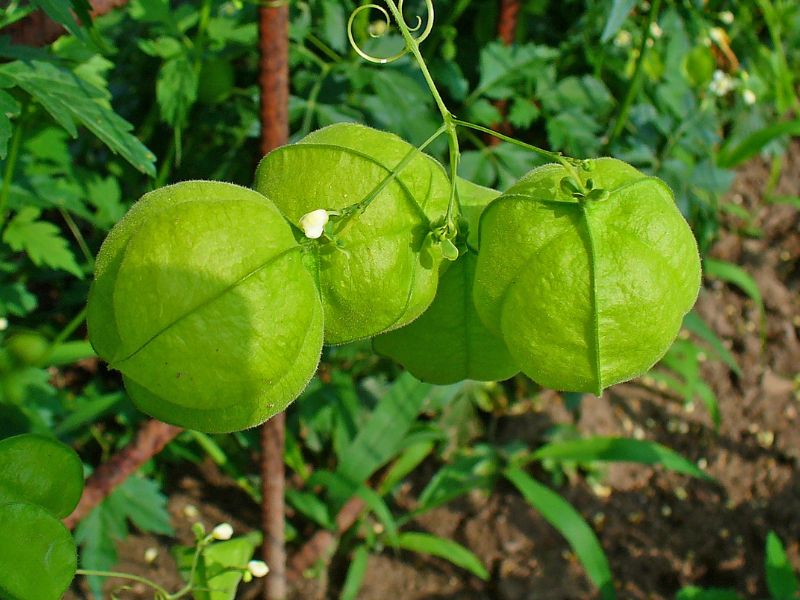
The conspicuous, membranous, almost spherical or broad pear-shaped capsule fruits have a diameter of 3 to 5 cm, initially fluffy hairy, light green “balloons” brown when ripe. There is only one seed in each of the three fruit chambers. A noticeable feature of the individual seeds is a large, light heart-shaped spot on the otherwise almost black seed. The kidney-shaped seeds have a diameter of about 6 mm and at their base a white, heart-shaped aril about 5 mm wide.
Similar species
Cardiospermum grandiflorum, being very similar to C. halicacabum, is a large growing, semi-woody perennial, whereas C. halicacabum is smaller in size, less woody and usual an annual plant. C. grandiflorum also features larger fruit than the more close-packed fruit of C. halicacabum. A kidney-shaped hilum exists on C. halicacabum seeds and a round hilum on C. grandiflorum seeds. Furthermore, the leaves and stems of C. grandiflorum have small reddish hairs that lack in C. halicacabum. Lastly, C. grandiflorum has larger flowers than those of C. halicacabum.
II. How to Grow and Care
Sunlight
Lesser Balloon Vine thrives best under full sun exposure, which supports vigorous growth and optimal health. This plant’s growth can be hampered by insufficient light, causing legginess and weak stems. Although lesser Balloon Vine tolerates a range of light conditions, it performs best outdoors with ample sunlight. When planting lesser Balloon Vine, choosing locations that receive direct sunlight for most of the day will yield the healthiest plants.
Lesser Balloon Vine doesn’t have a known indoor cultivation preference, as it is primarily an outdoor species. Moreover, lesser Balloon Vine may exhibit adaptive behaviors, like leaf orientation, to maximize light absorption under varying light levels.
Watering
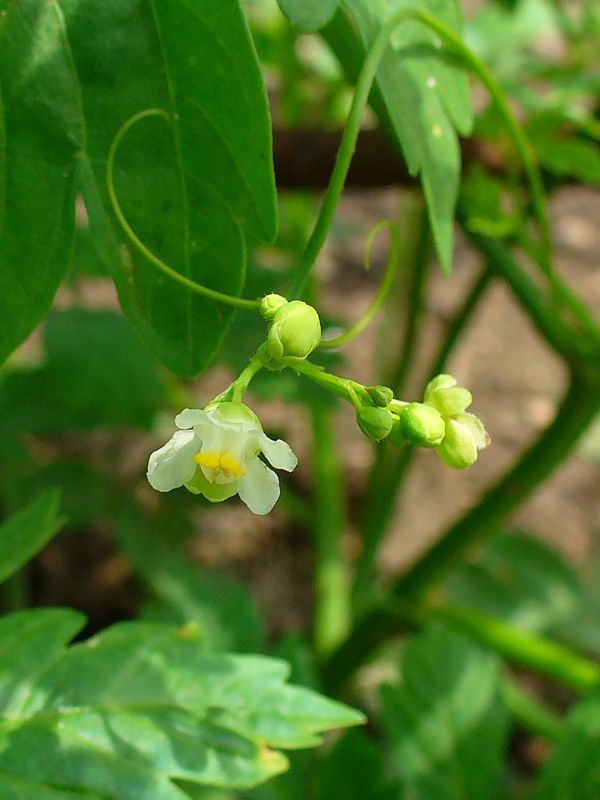
Thriving in its native tropical environment, lesser Balloon Vine has adapted to regular moisture and high humidity. This species exhibits a preference for consistent hydration but can tolerate short periods of dryness. Its watering schedule should reflect the balance it finds in nature, requiring watering every week. Cultivated primarily outdoors, lesser Balloon Vine benefits from rainwater during its growing season, which complements its water needs and promotes a healthy growth cycle.
Fertilizing
For optimal growth, fertilize lesser Balloon Vine bi-weekly in the growing season with balanced nutrition fertilizers, halving dosage in cooler temperatures. This regimen bolsters foliage, blossom, and seed pod health, enhancing robustness.
Over-fertilization risks leaf burn; thus, adhere to recommended quantities. Monitor soil fertility, adjusting applications accordingly, and incorporate slow-release formulas to maintain consistent nutrient levels. Seasonal variation dictates reduced winter feeding, reflecting lesser Balloon Vine’s rest period. For safe application, don gloves, and irrigate post-fertilization, ensuring root absorption and minimizing root burn potential.
Transplanting
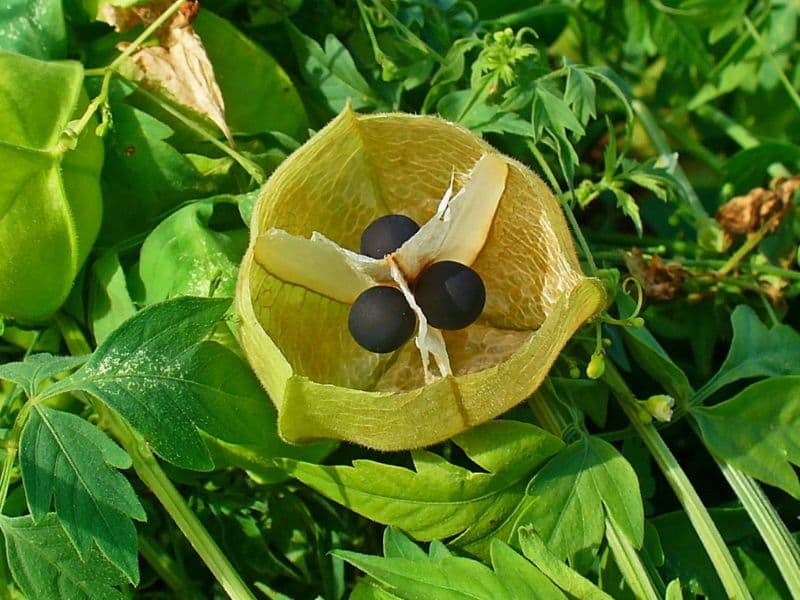
The optimal period to relocate lesser Balloon Vine is between S1-S2 (please choose the appropriate seasons). This time offers the best conditions for root development as the plant adapts to its new location. It’s crucial lesser Balloon Vine is placed in an area with adequate sunlight and well-drained soil. Don’t forget to water thoroughly after the process, but otherwise, lesser Balloon Vine is pretty self-sufficient. Treat it with care!
Repotting
Repot lesser Balloon Vine, a climbing plant, every 2-3 years to accommodate its growth. Springtime is ideal as it matches the plant’s active phase. Choose a medium-sized pot that allows root expansion. Place lesser Balloon Vine in a shaded location with indirect sunlight and water regularly to aid in post-repotting recovery. The right care ensures a healthy, thriving vine.
III. Uses and Benefits
The 1989 book records that “The root is diuretic and demulcent. It is mucilaginous, but has a nauseous taste, and is used to treat rheumatism. Sanskrit writers describe the root as emetic, laxative, stomachic, and rubefacient; they prescribe it in rheumatism, nervous diseases, piles, etc.
The leaves are used in amenorrhoea. Rheede says that on the Malabar coast the leaves are administered for pulmonic complaints. It is also used in homeopathy to treat eczematic skin. For this purpose, a mother tincture is made from the flowering parts of the plant. This is also processed into creams and ointments. The green parts of the plant are eaten as vegetables.
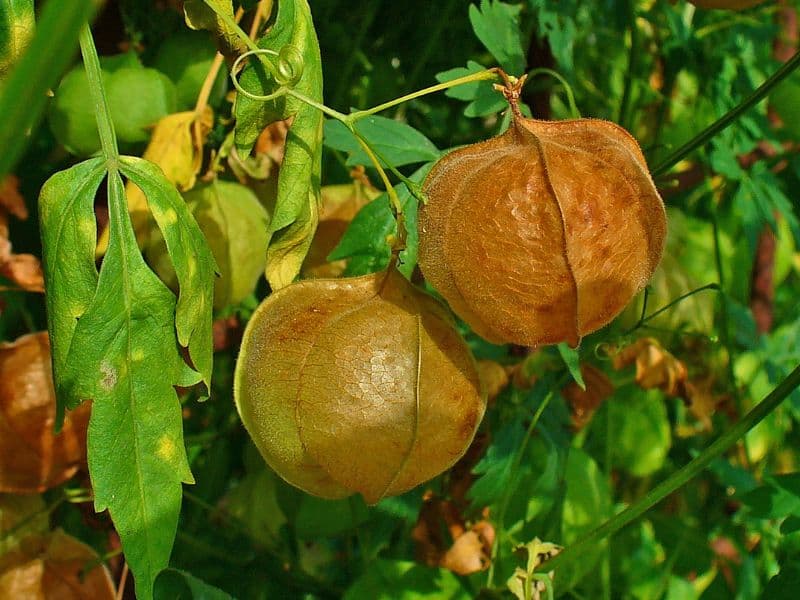
According to Ainslie, the root is considered laxative, and is given in dosages of half a cupful twice daily. “It would appear that in rheumatism the Hindus [sic.] administer the leaves internally rubbed up with castor-oil, and also apply a paste, made with them, externally; a similar external application is used to reduce swellings and tumours of various kinds.” (Dymock.)
Its ingredients include triterpene saponins, halicaric acid, catechin tannins, terpenes, phytosterols, flavonoids and quebrachitol.
Find Where to Buy the Best Balloon Vine (Cardiospermum halicacabum)
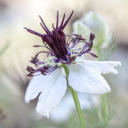






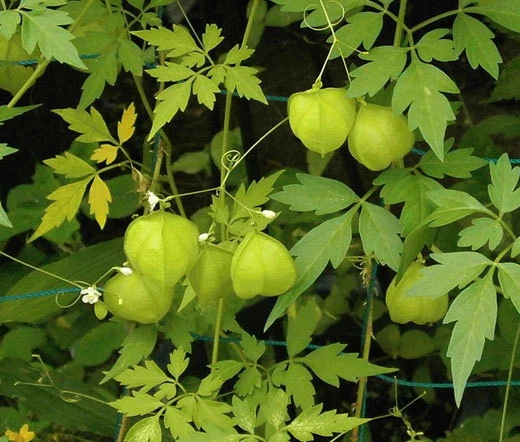

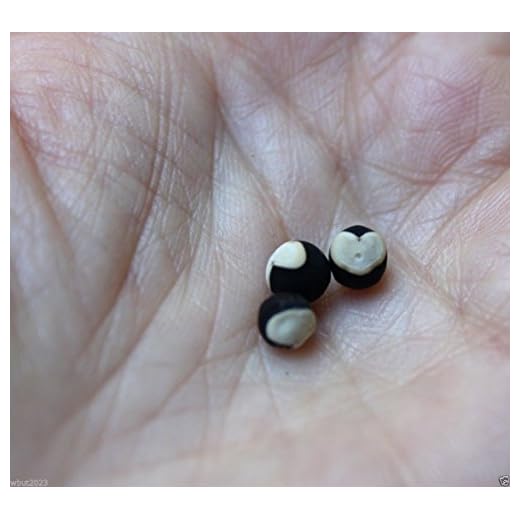








Leave a Reply